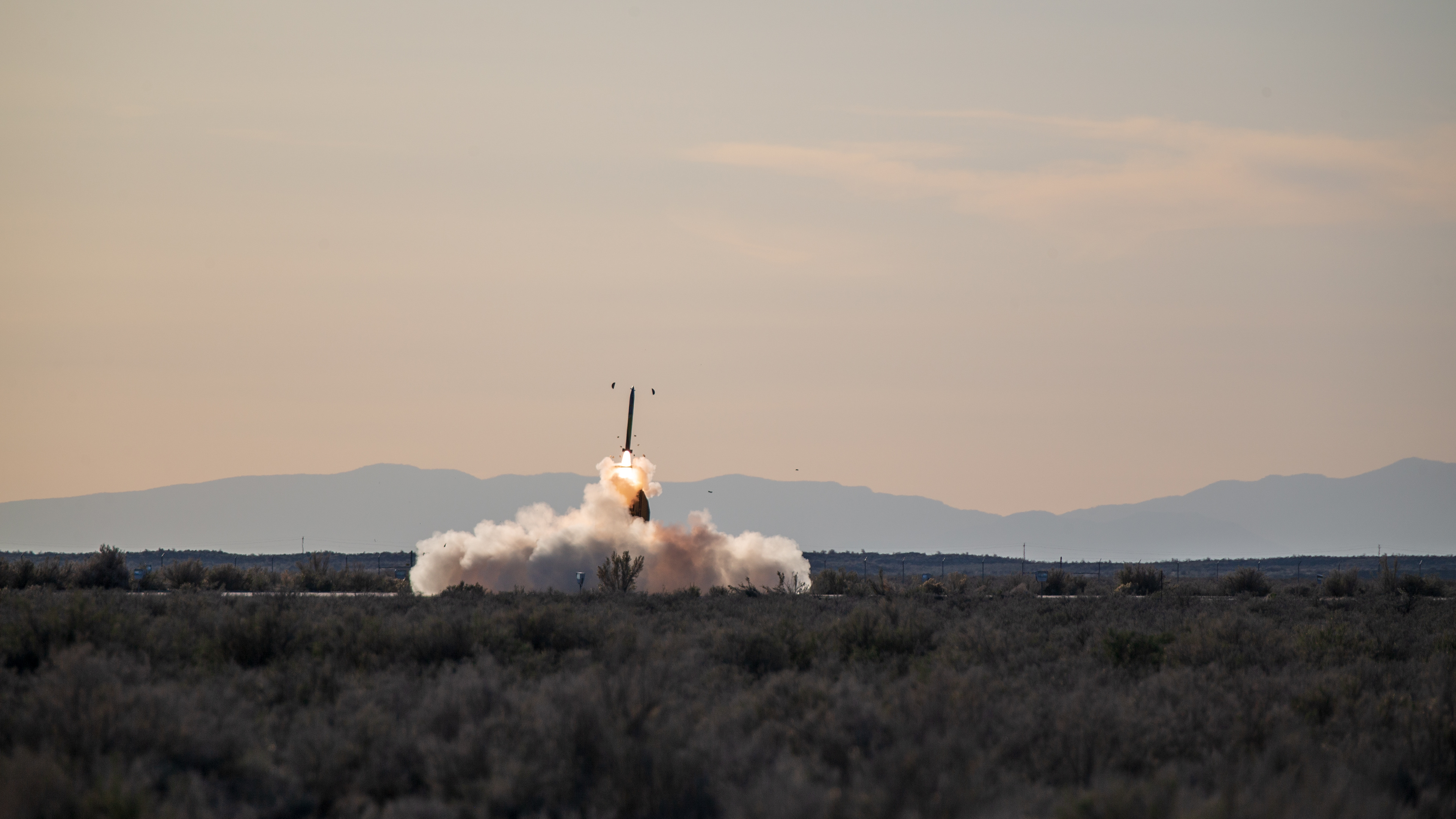U.S. Marines with Charlie Company, 1st Tank Battalion, 1st Marine Division, fire an M1A1 Abrams tank main cannon while conducting live-fire training during exercise Native Fury 20 in the United Arab Emirates, March 19, 2020. Native Fury is an exercise designed to strengthen the U.S. Military’s long-standing relationship and interoperability with the United Arab Emirates Armed Forces, as well as provide realistic training to U.S. Marines and Sailors for crisis response operations.
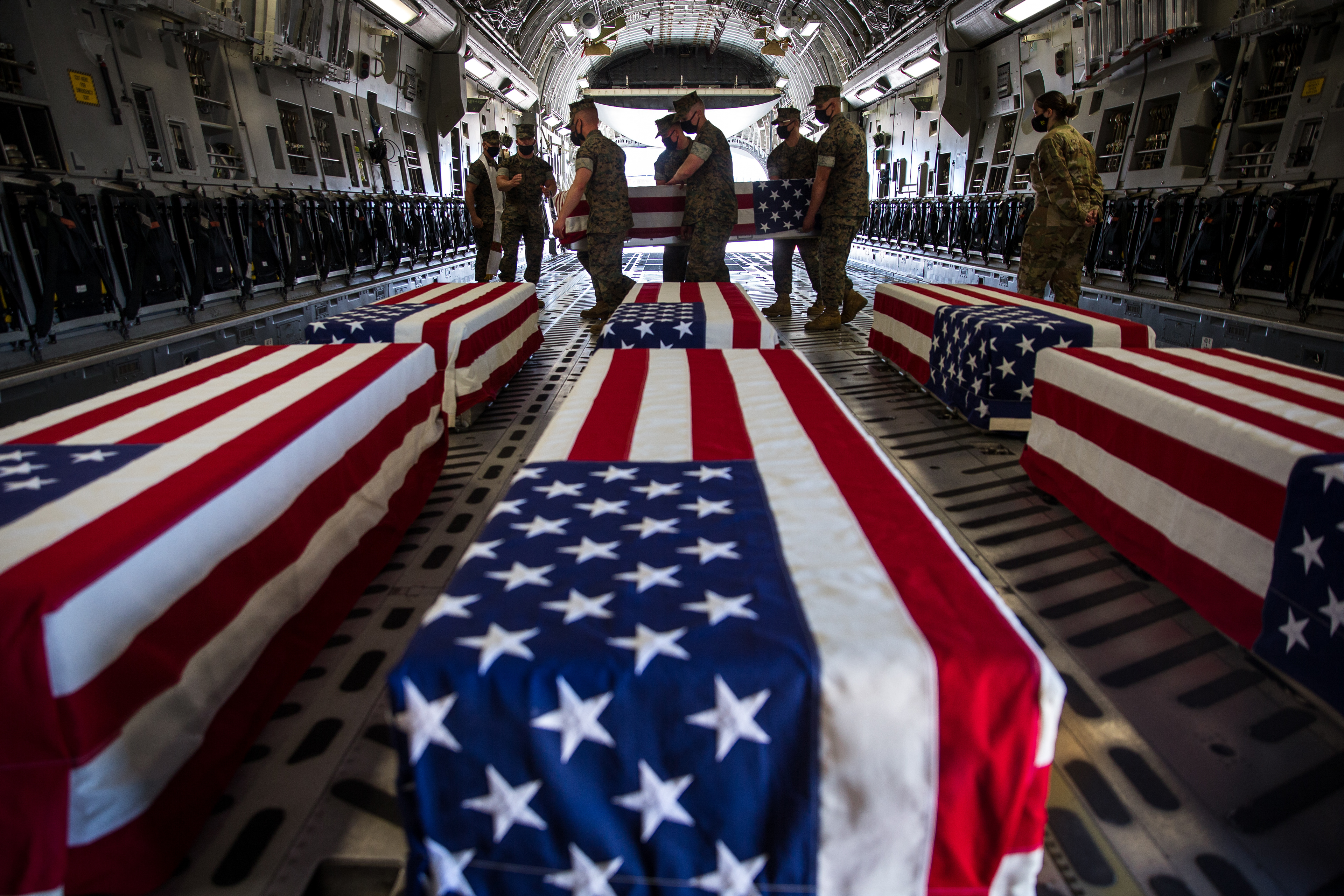
U.S. Marines and Sailors with Bravo Company, Battalion Landing Team 1/4, 15th Marine Expeditionary Unit, carry a casket inside a U.S. Air Force C-17 Globemaster III at Marine Corps Air Station Miramar, California, Aug. 12, 2020. The remains of seven Marines and a Sailor recovered Aug. 7 off the coast of San Clemente Island following a July 30 assault amphibious vehicle mishap were transferred to Dover Air Force Base, Delaware, for final preparation for burial before being released to their families.
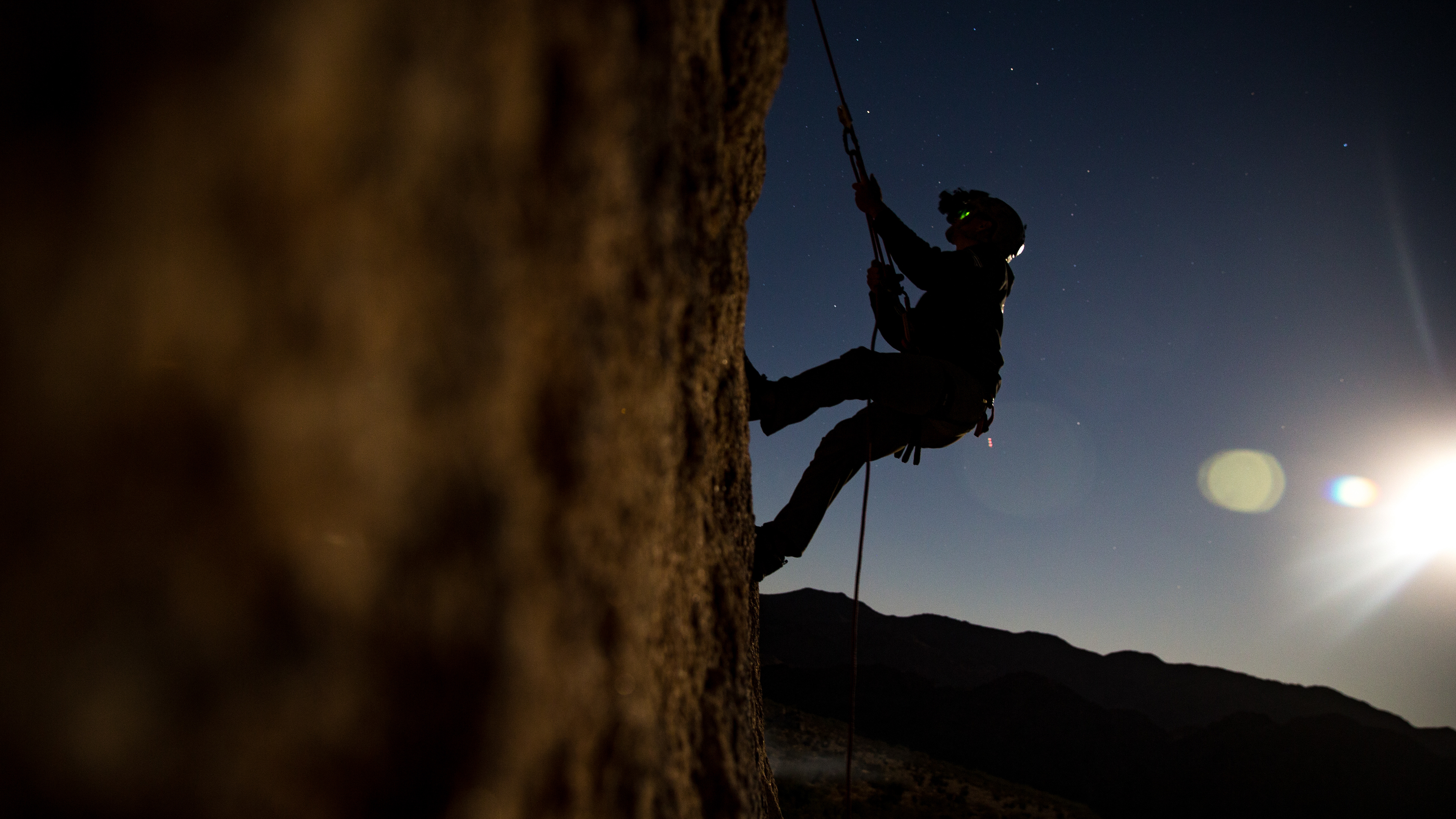
U.S. Marine Corps Sgt. Antonio Rojas Jr., an instructor with Expeditionary Operations Training Group, I Marine Expeditionary Force, ascends a rock formation during a night climb for an assault climber’s course at Joshua Tree National Park, California, Oct. 12, 2019. Assault climbers enable a unit to operate in environments that require the ability to climb and rappel, allowing Marine Corps units to move freely through terrain that would otherwise be impassable.

U.S. Marine Corps Sgt. Mikel Harriot, left, a low altitude air defense gunner with 2D Low Altitude Air Defense, 26th Marine Expeditionary Unit, drives a utility task vehicle (UTV) while Cpl. Jennessa Davey, a combat videographer with Communication Strategy and Operations Company, I Marine Expeditionary Group Information Group, records video of a UTV fitted with the Light Marine Air Defense Integrated System while on a patrol to provide security for the participants of exercise Native Fury 20 in the United Arab Emirates, Feb. 25, 2020. Native Fury 20 is designed to increase the U.S. Armed Forces abilities to plan, communicate and conduct complex sea and shore-based operations in response to natural disasters and other contingencies in the region.

PACIFIC OCEAN (Oct. 5, 2020) ‒ U.S. Sailors assigned to the amphibious transport dock ship USS Somerset (LPD 25) signal to a Marine Corps UH-1Y Venom with Marine Medium Tiltrotor Squadron 164 (Reinforced), 15th Marine Expeditionary Unit, for landing during deck-landing qualifications. The Makin Island Amphibious Ready Group and the 15th MEU are currently conducting routine operations in the eastern Pacific Ocean.
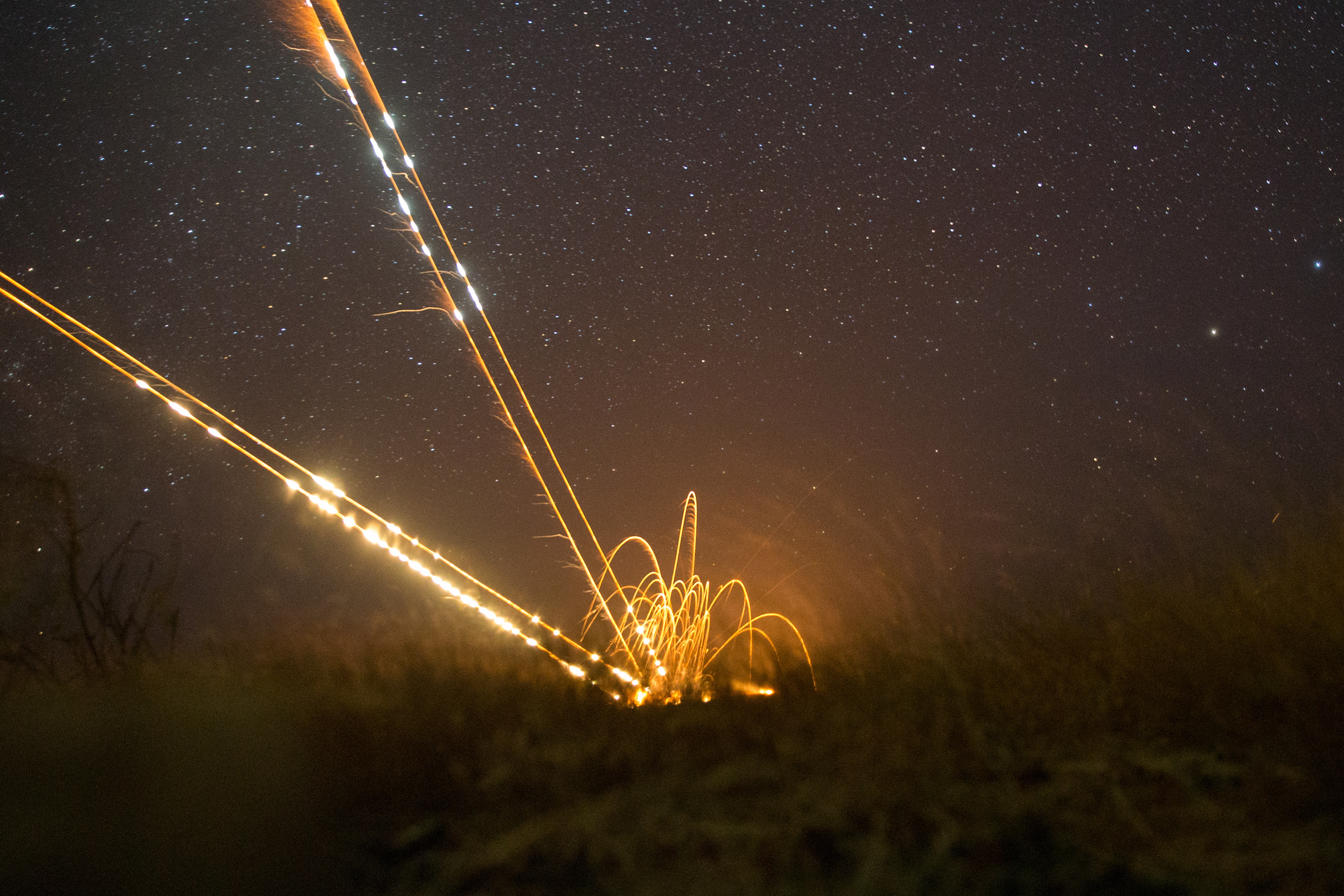
BALEDOGLE MILITARY AIRFIELD, Somalia (Jan. 7, 2021) – Rocket impacts from a U.S. Air Force AH-6 Little Bird assigned to Joint Special Operations Aviation Detachment illuminate the night. The U.S. remains committed to our work in East Africa and Somalia, to include building and maintaining regional security, continuing to pressure al-Qaeda’s franchise al-Shabaab and advancing mutual interests with our East African partners.

A U.S. Marine combat engineer assigned to Alpha Company, 1st Battalion, 5th Marine Regiment, blows a bubble with his gum while sitting in the troop compartment of an AAV-P7/A1 assault amphibian vehicle at Marine Corps Base Camp Pendleton, California, July 11, 2019. 1st Battalion, 5th Marines conducted a series of field exercises in cooperation with the Expeditionary Operations Training Group to increase unit ability when conducting expeditionary operations.
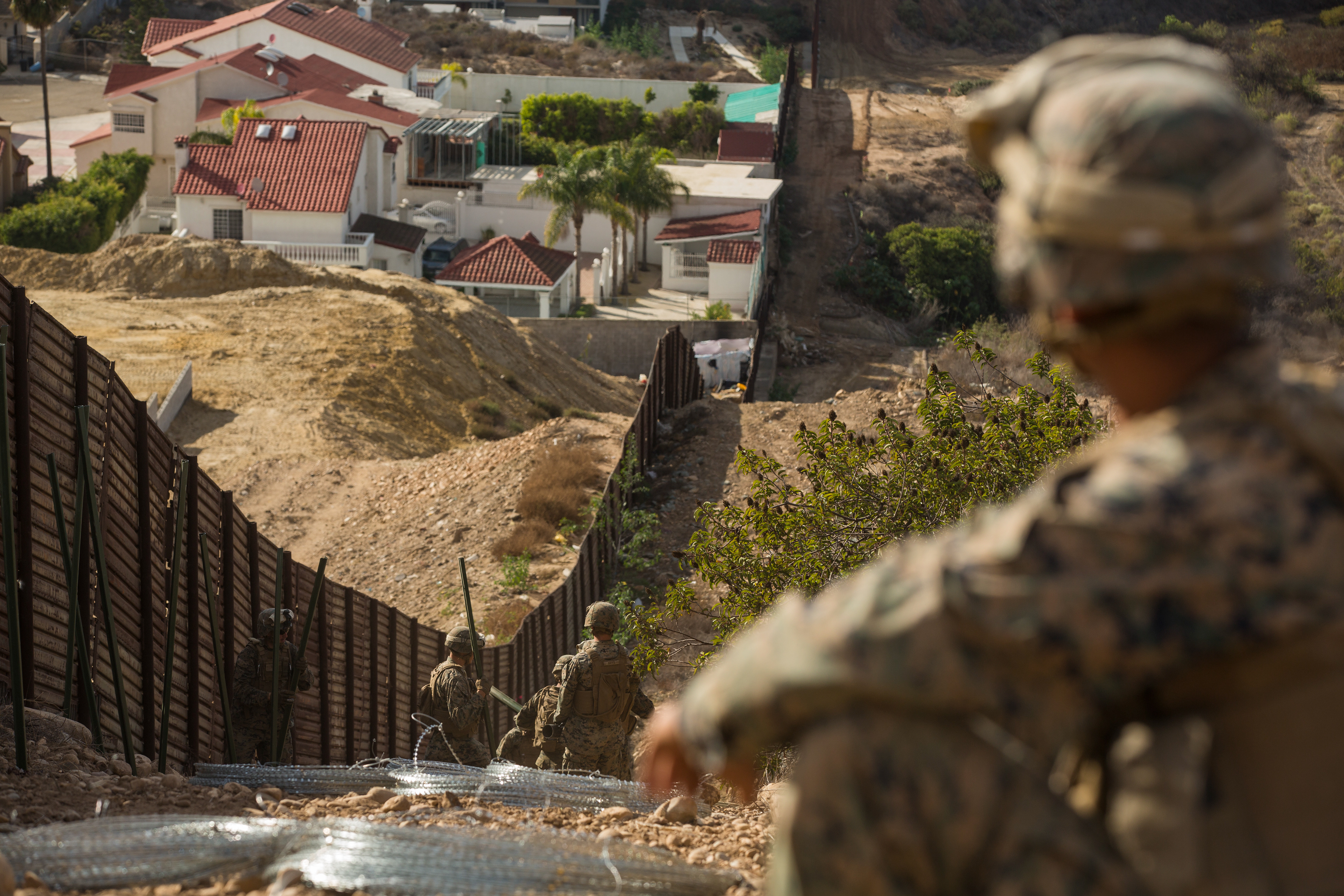
U.S. Marine Corps Sgt. Dominic Dady, a combat engineer with 1st Combat Engineer Battalion, Special Purpose Marine Air-Ground Task Force 7, supervises his team at the California-Mexico border, Nov. 28, 2018. U.S. Northern Command is providing military support to the Department of Homeland Security and U.S. Customs and Border Protection to secure the Southern border of the United States.

U.S. Marine Corps Lance Cpl. James Linduff, a rifleman assigned to Alpha Company, 1st Battalion, 5th Marine Regiment, 1st Marine Division, provides security out of a window while conducting urban operations at Marine Corps Base Camp Pendleton, California, July 8, 2019. 1st Battalion, 5th Marines conducted a series of field exercises in cooperation with the Expeditionary Operations Training Group to increase unit ability when conducting expeditionary operations.
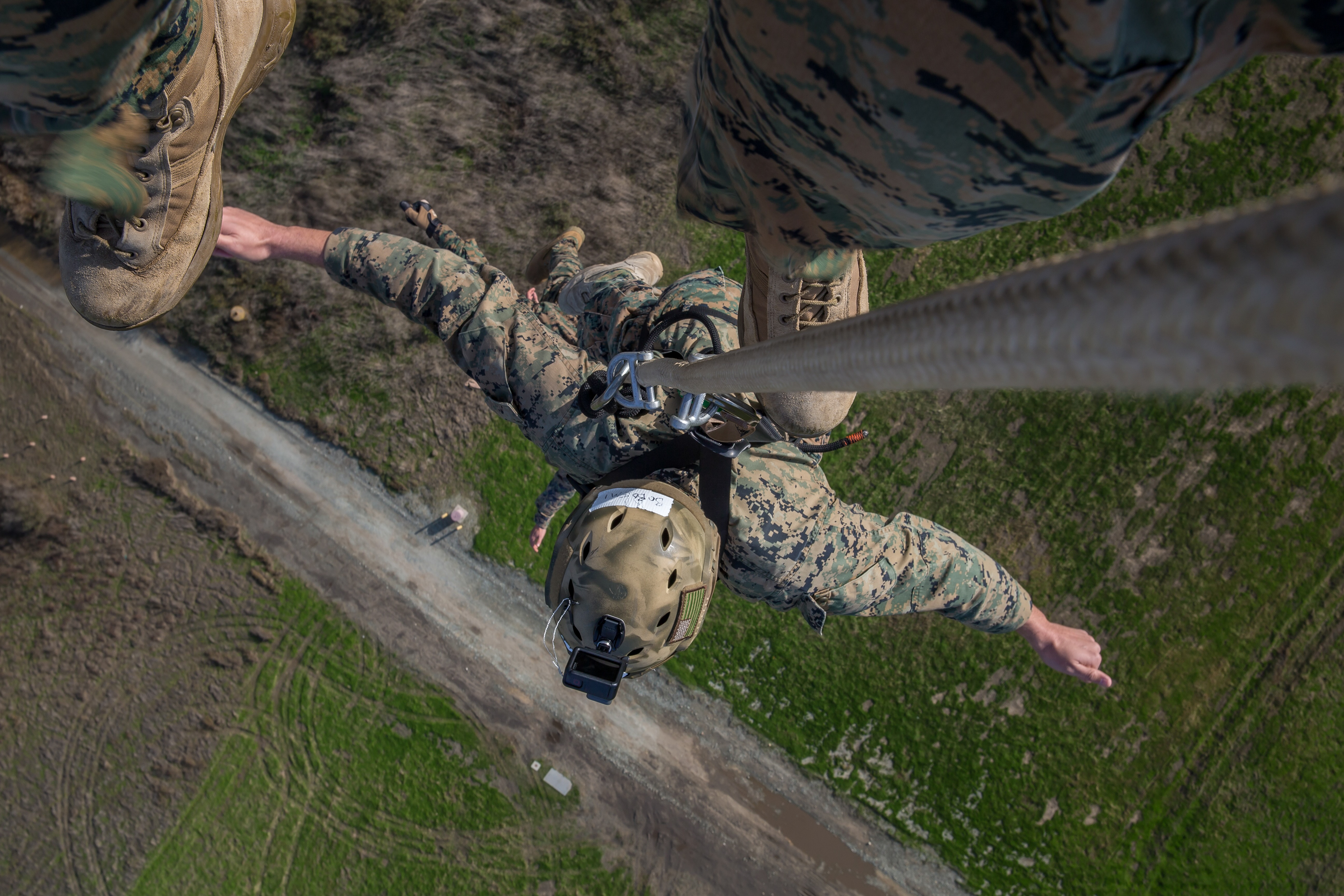
U.S. Marine Corps Warrant Officer Douglas Bobo, a cyber operations officer with 1st Radio Battalion, I Marine Expeditionary Force Information Group, uses a special patrol insertion/extraction (SPIE) harness to be lifted off the ground during a helicopter rope suspension technician (HRST) masters course at Marine Corps Base Camp Pendleton, California, Dec. 11, 2019. The course provided the students the ability to conduct HRST techniques safely on their own, including SPIE rigging, fast roping, and rappelling from helicopters, enabling their units to be able to insert and extract anywhere, even when a landing zone is unavailable.

PACIFIC OCEAN (Aug. 2, 2020) — U.S. Marine Corps Sgt. Ross Roby, a UH-1Y Venom crew chief with Marine Medium Tiltrotor Squadron 164 (Reinforced), 15th Marine Expeditionary Unit, secures his helmet on the flight deck of the amphibious transport dock ship USS Somerset (LPD 25) during training to increase Navy-Marine Corps interoperability in the eastern Pacific. The U.S. Navy and Marine Corps continue to combine efforts to refine and strengthen fundamental amphibious capabilities and reinforce the Navy-Marine Corps team.
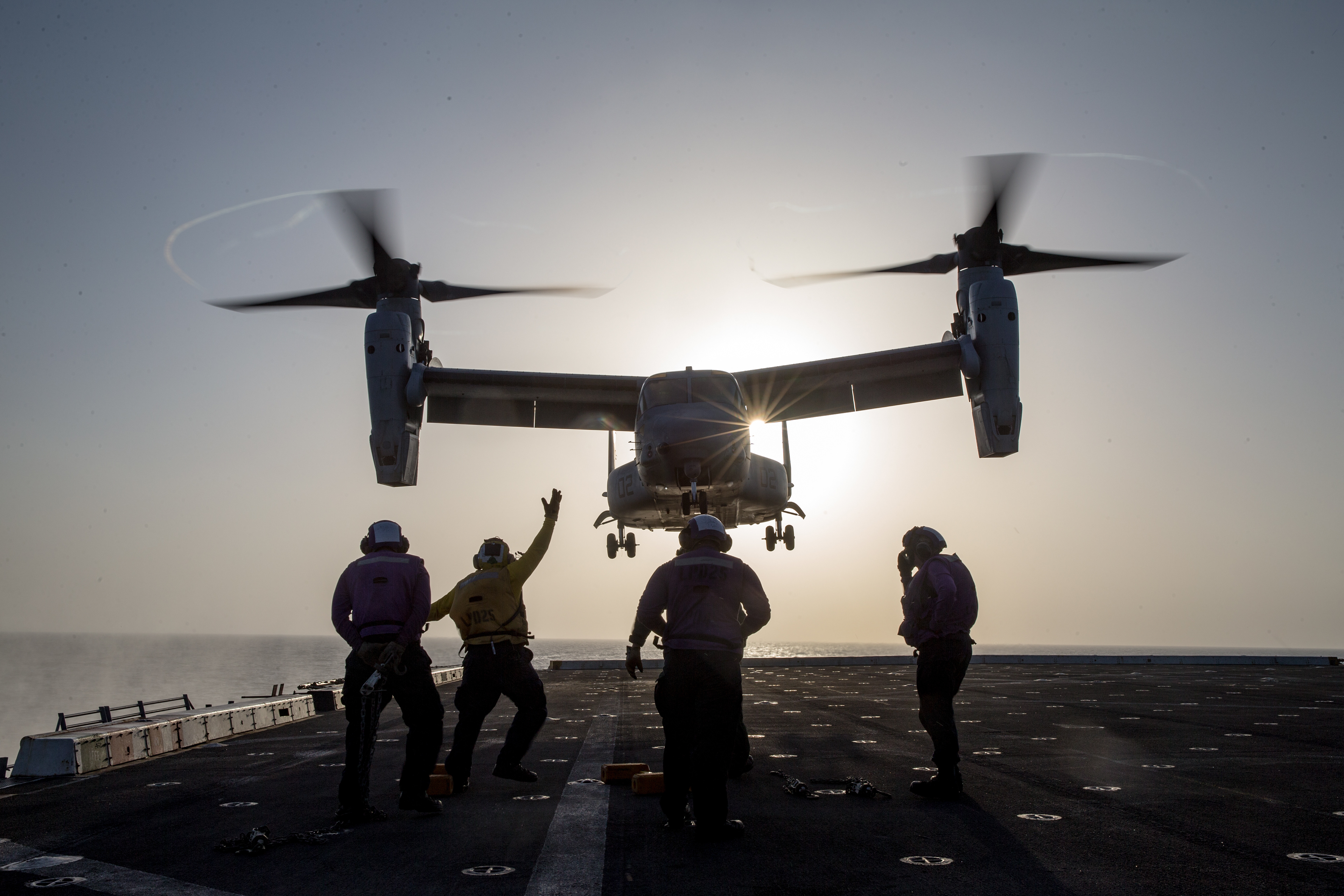
INDIAN OCEAN (Jan. 25, 2021) – A U.S. Marine Corps MV-22 Osprey assigned to Marine Medium Tiltrotor Squadron 164 (Reinforced), 15th Marine Expeditionary Unit, takes off from the flight deck of the amphibious transport dock ship USS Somerset (LPD 25). The Makin Island Amphibious Ready Group and the 15th MEU are conducting operations in the U.S. 6th Fleet area of responsibility.
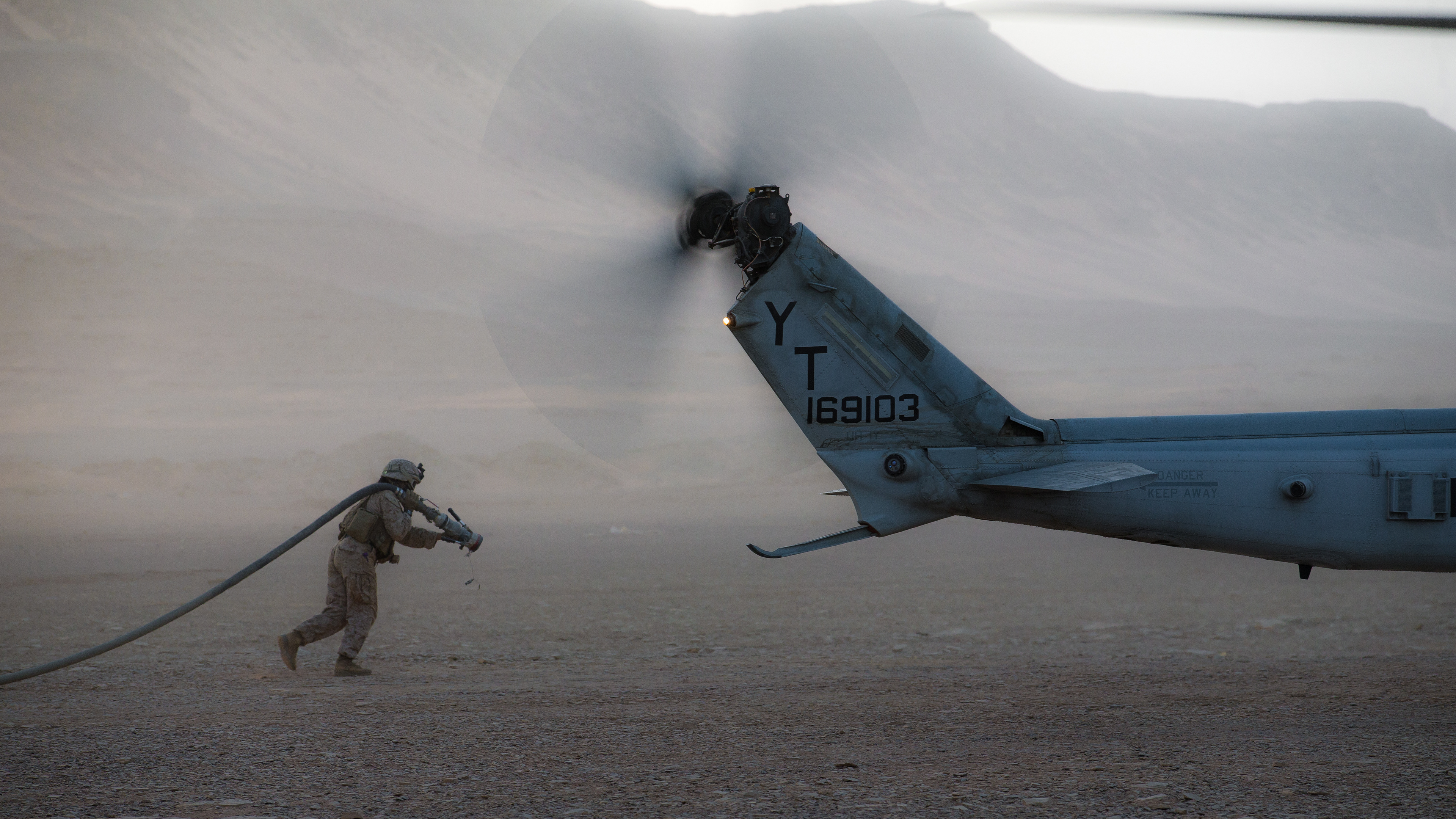
TABUK, Kingdom of Saudi Arabia (March 9, 2021) – U.S. Marine Corps Cpl. Selina Lopez, a radio operator assigned to Marine Medium Tiltrotor Squadron 164 (Reinforced), 15th Marine Expeditionary Unit (MEU), carries a fuel hose to a UH-1Y Venom at a forward arming and refueling point during a theater amphibious combat rehearsal (TACR) in Tabuk, Kingdom of Saudi Arabia, March 9. TACR integrates U.S. Navy and Marine Corps assets to practice and rehearse a range of critical combat-related capabilities available to U.S. Central Command, both afloat and ashore, to promote stability and security in the region. The 15th MEU is deployed to the U.S. 5th Fleet area of operations in support of naval operations to ensure maritime stability and security in the Central Region, connecting the Mediterranean and Pacific through the Western Indian Ocean and three strategic choke points.
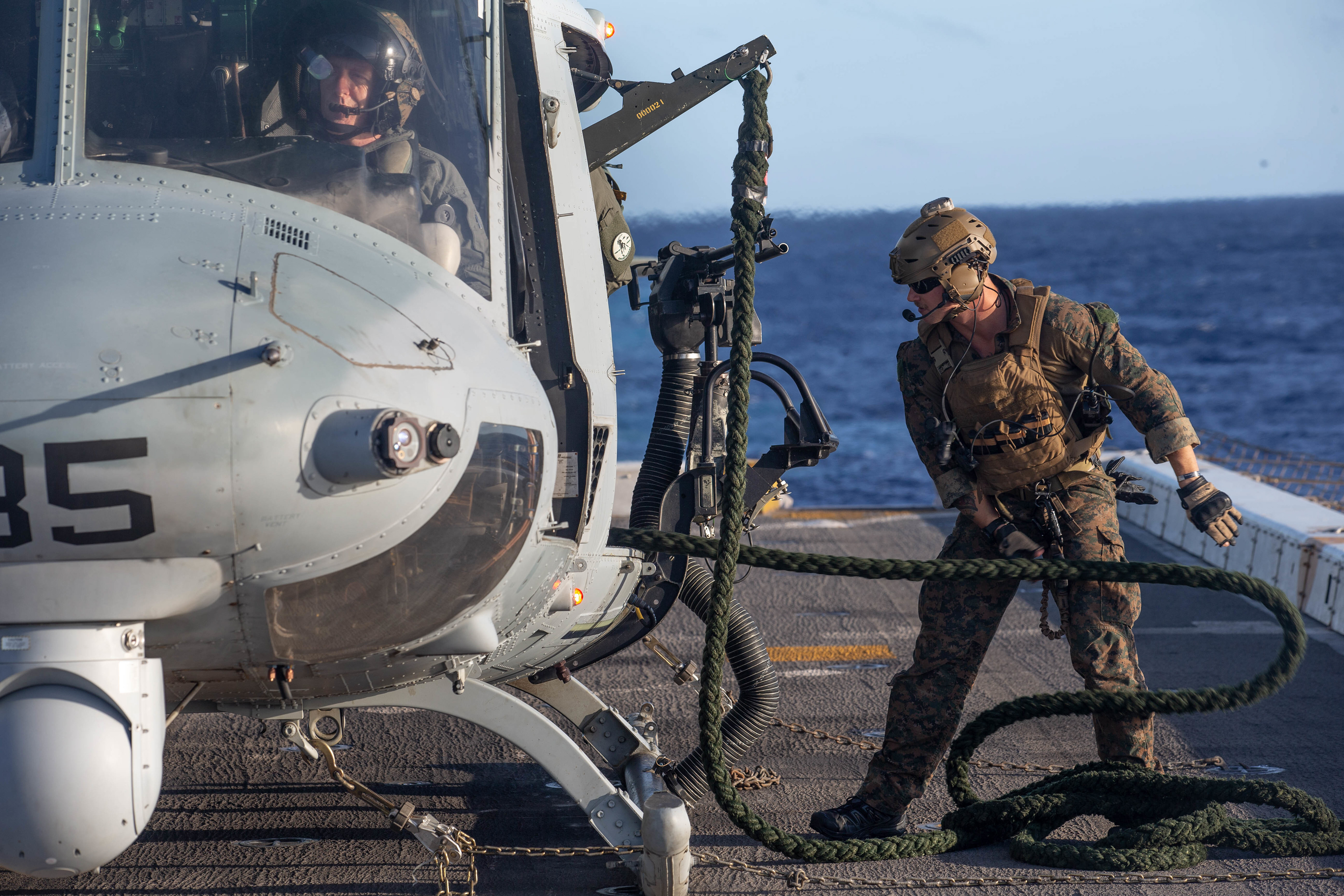
A U.S. Marine with the All-Domain Reconnaissance Detachment, 15th Marine Expeditionary Unit, prepares a rope for fast-rope training from a UH-1Y Venom with Marine Medium Tiltrotor Squadron 164 (Reinforced), 15th MEU, on the flight deck of the amphibious transport dock ship USS Somerset (LPD 25) in the Pacific Ocean, Nov. 30, 2020. The Makin Island Amphibious Ready Group and 15th MEU provide numbered fleet and combatant commanders with a responsive, flexible and forward-deployed asset capable of maritime power projection, contingency operations and crisis response.
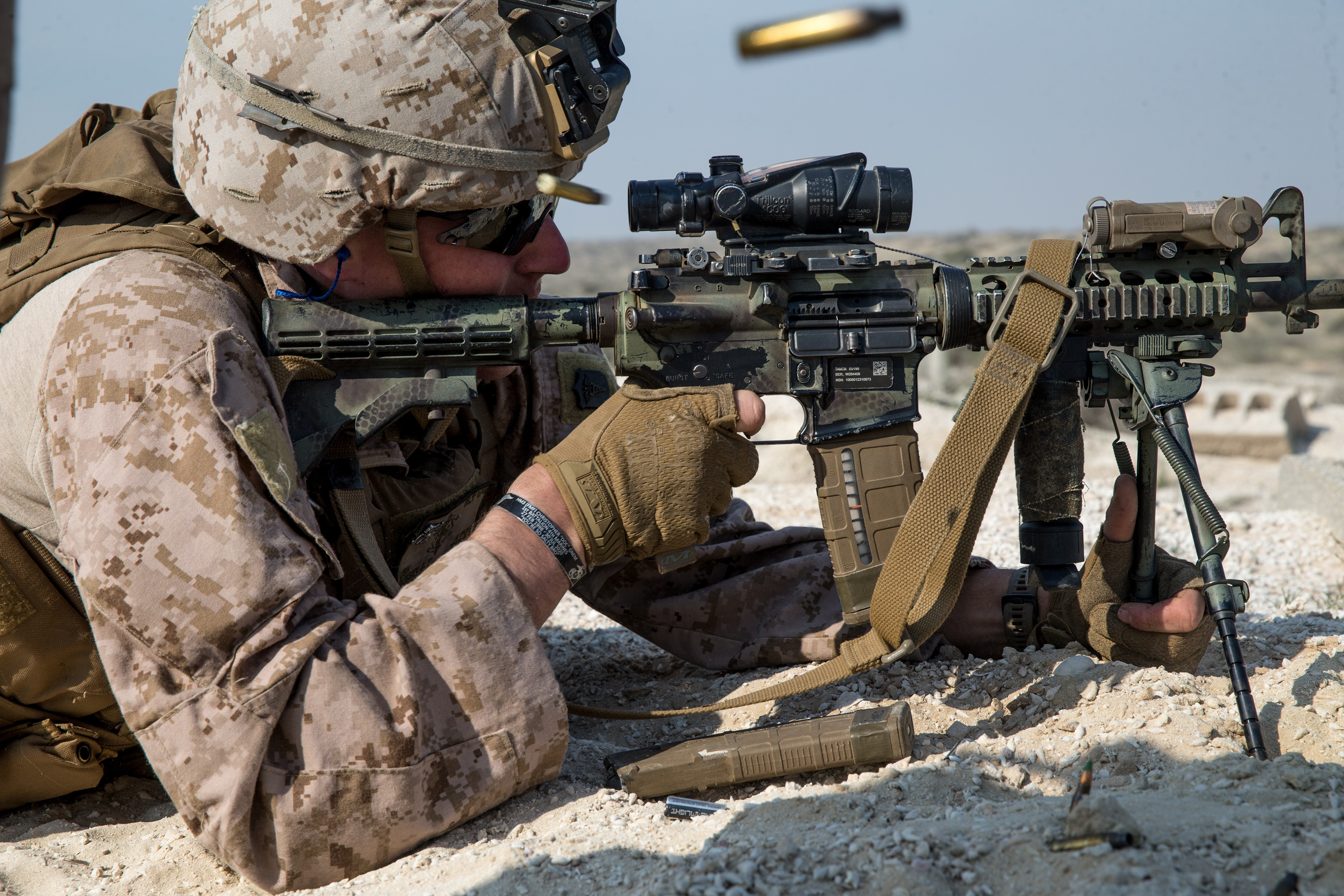
U.S. Navy Hospital Corpsman 3rd Class Jonathan Bussey with Bravo Company, Battalion Landing Team 1/4, 15th Marine Expeditionary Unit, fires an M4 carbine during a live-fire unknown distance range, Feb. 10, 2021. The Makin Island Amphibious Ready Group and 15th MEU provide numbered fleet and combatant commanders with a responsive, flexible and forward-deployed asset capable of maritime power projection, contingency operations and crisis response.
